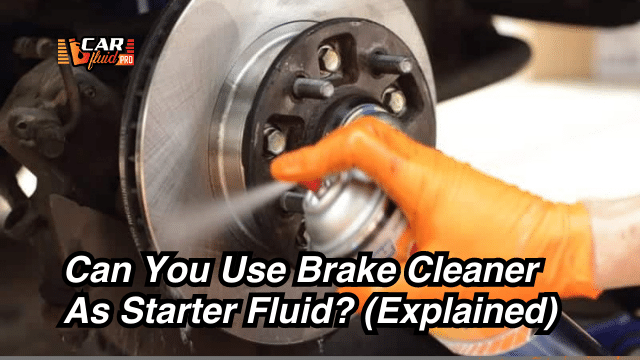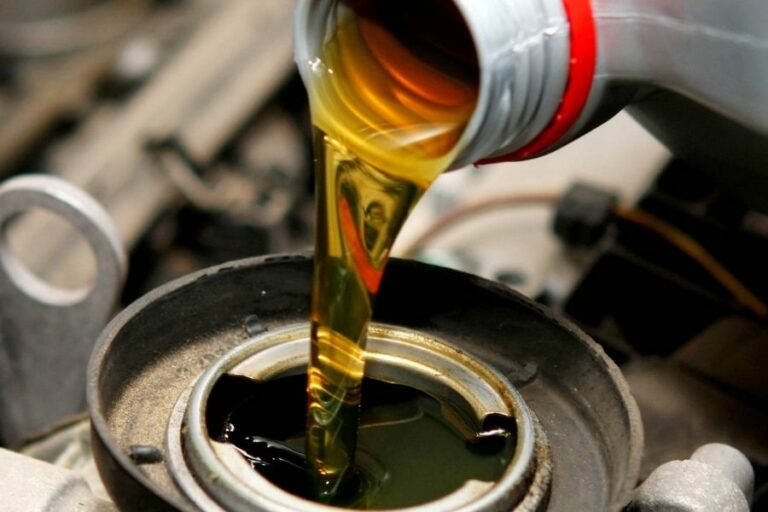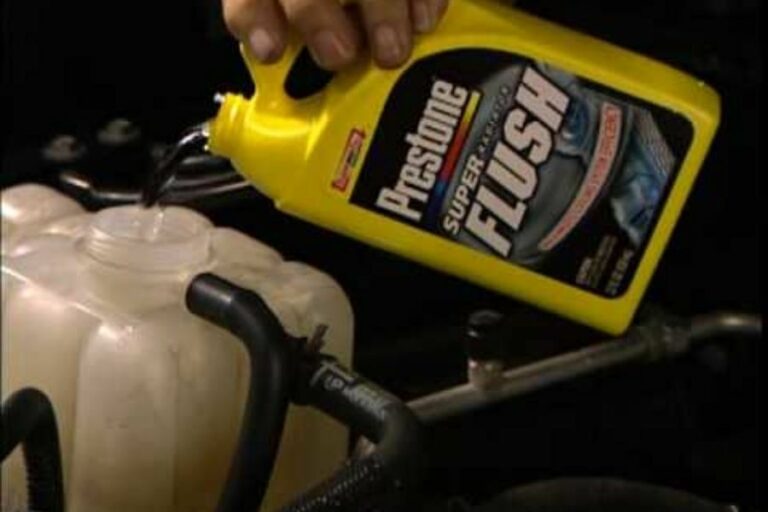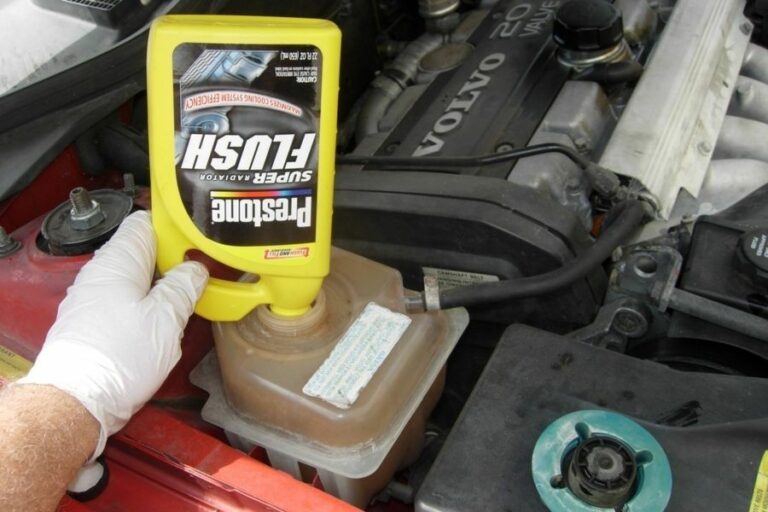Why is No Brake Fluid Coming Out When Bleeding? (Explained)
In order to maintain the braking system of your vehicle, bleeding out the air from the system is mandatory. During this extensive procedure, the braking fluid is used to transmit the pressure inside the cylinders and flush out the air.
However, you might notice abruptly that no brake fluid is coming out when you are bleeding the brakes.
You will need to know the exact reasons for this problem before you can troubleshoot them accordingly. In this article, we will discuss every single reason and solution for this issue.
Why No Brake Fluid Coming Out When Bleeding?
Let’s look at all the possible reasons why the brake fluid stops coming out during bleeding.
- Damaged Brake Hose
- Clogged Brake Caliper
- Blockage in the bleed valve
- Brake line clogging or leaking
- Proportional valve failure
- Bleed Screw Issues
- Faulty master cylinder
- Wrong Bleeding procedure
How To Diagnose & Fix No Brake Fluid Coming Out When Bleeding?
Since we are already aware of all the causes of this problem, we need to know exactly how they affect the brake fluid.
In this section, you will know how each reason leads to the lack of brake fluid when bleeding the brakes. Along with that, you’ll also find the solutions for each of them.
1. Check The Brake Hose For Damage
The brake hose is the component that carries the brake fluid to the dynamic brake calipers from the reservoir. This brake hose is exposed to the environment outside, which affects them gravely.
This rough environment can cause tears, clogging, and corrosion to the brake hose. As a result, the brake fluid is contaminated and starts leaking.
In such circumstances, the brake fluid lacks pressure and can’t reach the master cylinder or brake calipers. So, no brake fluid will come out when you’re bleeding the brakes.
To fix this, firstly, check the brake hose thoroughly for cracks and tears on the inside and outside walls. If there is only corrosion on the walls, clean it up with baking soda.
Apply pressure on the brake pedal and examine if the brake hose is clogged.
If you see no fluid passing through the brake hose and notice a bulging, the brake hose is fully clogged. In that case, replace the brake hose with a new one.
Read Also: How To Get Air Out Of Brake Lines Without Bleeding?
2. Inspect The Brake Calipers
A damaged or clogged brake caliper can directly affect the brake bleeding process. The brake fluid must pass through the brake caliper to reach the bleed screw.
If there is a blockage inside the caliper, it fails to run smoothly. So, there is a lack of brake fluid coming out when bleeding.
Firstly, detach the rubber brake hose from the brake caliper to check the inside. Apply pressure to the brake pedals to check if the brake fluid runs inside.
If you find debris or dirt inside the brake caliper, that is the reason for the clogging. Blow compressed air into the brake caliper to clear up the junk inside.
If it doesn’t work in removing the buildup, get the brake caliper for servicing or replace it with a new one.
3. Find The Blockage In the Bleed Valve
The bleed valve releases the air and pressure from inside the system. Over time and without maintenance, debris and corrosion can accumulate in the brake valve.
Especially if the bleed valve doesn’t have a rubber cap, it is prone to get clogged sooner. Hence, no air or brake fluid will come out while bleeding.
You will need to unscrew the brake valve first carefully. Let the remaining brake fluid bleed out by pressurizing the brake pedal.
Blow compressed air inside the bleed valve to blow away and remove the debris. Next, spray a good brake cleaner inside the brake valve and use a thin brush or pipe to scrub it.
Read Also: Can You Use Transmission Fluid For Brake Fluid? (Avoid Risk)
4. Figure Out The Bleed Screw Issues
When the bleed screw is open, the brake fluid is disposed of. This is the final opening of the hydraulic system during the bleeding process.
If the bleed screw refuses to open, there will be no way for the brake fluid to get out while bleeding.
A hardened bleed screw due to rust can prevent the screw from opening and letting the brake fluid out.
Try opening and closing it smoothly to confirm that the bleed screw is facing issues. It is located at the top point of the fluid chamber behind the brake caliper.
If it resists or is hard to move, the bleed screw is shut due to water, dust, and mud buildup.
The first fixing measure for this issue should be spraying some lubricant onto the bleed screw and then trying to open it. Use WD40 lubricant on the screw to ease it out of the way.
You can use an air hammer to remove the rust from the bleed screw. A steady vibration will be provided to the bleed screw, which will shake out all of the rust from the component.
Thus an air hammer can remove the problem without damaging the bleed screw even the slightest.
If you’re dealing with a completely broken or damaged bleed screw, it is better to replace the whole brake caliper. You can’t get such a broken screw out of the caliper safely.
Read Also: How To Troubleshoot Brake Fluid Leaking From Rear Wheel?
5. Examine The Proportional Valve
A big sign of the proportional valve issue is the failure to bleed, specifically the rear brakes.
If you notice the front brakes bleeding just fine and only face no brake fluid coming out of the rear brakes, the problem is the proportional valve.
The function of the proportioning valve is to distribute the brake fluid pressure evenly.
This valve lets the brake fluid flow to the rear axles by opening up when you lightly press the brake.
However, during brake bleeding, a huge amount of pressure is suddenly released from the bleed valve.
The proportional valve pinpoints that loss of pressure and closes up completely or partially.
Hence, the brake fluid will not be able to flow to the rear axle while bleeding and resulting in no brake fluid coming out.
In order to get rid of this issue, you will need to reset the proportional valve. Follow these steps to reset this valve:
- As the first step, tighten up the rear brake bleed valves.
- Press down on the brake pedal without removing your feet.
- Take off the front brake bleed valves and keep them in that situation for ten seconds.
- Do this same process several times until the proportional valve clicks to indicate it is reset.
If resetting the valve doesn’t work, detach the valve from the braking system. Use a clean fluid to spray through the passages of the proportional valve.
If you see that the fluid does not pass through a single one of the four passages, you will need to replace the proportional valve.
Read Also: Does Brake Fluid Leak When Car Is Off? Explained
6. Check For Brake Line Blockage or Leaks
The line connecting the brake fluid system to the brake calipers is the brake line. Any blockage in this line can stop the brake fluid from traveling to the destined component.
The wrong kind of brake fluid can cause this. The corrosion and blockage can also lead to cracks or holes in the brake line.
The cracks can leak the brake fluid out of the brake line. As a result, the brake fluid lacks the necessary pressure and amount inside the brake line. When bleeding the brakes, the brake fluid doesn’t come out.
Inspect the brake lines thoroughly to locate the tears and cracks along their length. Then, detach the brake lines to clear up the blockage using a plunger or denatured alcohol.
You can also opt for an air compressor to flush out all the debris and dirt causing the blockage. If cracks or holes are beyond repair, replacing the brake line might be the best option.
7. Analyze The Master Cylinder For Issues
The master cylinder is a mandatory component of the braking system. It converts the brake pedal pressure into hydraulic pressure.
A leak in the master cylinder leads to the brake fluid level to reduce. It also decreases the pressure needed for the brake fluid to reach the brake caliper.
A good sign of a faulty master cylinder is that every time you press down the brake pedal, the brake fluid in the reservoir starts bubbling.
Such a faulty master cylinder is a probable reason for no brake fluid coming out when bleeding.
Repairing the master cylinder can be an extremely difficult job. Often, it might lead to contamination of the brake fluid instead of a good fix.
So, replacing the master cylinder is the best idea to fix this issue. Take the help of a professional to complete this replacement.
Read Also: Brake Fluid Leaking Under Middle of Car | What to Check?
FAQs.
You will find the answers to the most frequently asked questions about no brake fluid coming out when bleeding. This section will provide all the answers to the remaining questions regarding this topic.
How long does bleeding the brakes take?
Usually, it takes about 30 minutes to bleed a vehicle’s brakes. Sometimes, it can also take up to an hour. It might take longer if you’ve replaced a big component like the master cylinder.
Can I change the brake fluid without bleeding?
Yes, you can change the brake fluid without bleeding the brakes. Connect a pump to the master cylinder to drain out the old brake fluid. Refill with a new brake fluid the same way.
Do I need to bleed all four brakes?
You don’t need to bleed all four brakes if you have an independent brake fluid line. When your brake fluid is not below the recommended level, you can bleed just one or two brakes.






